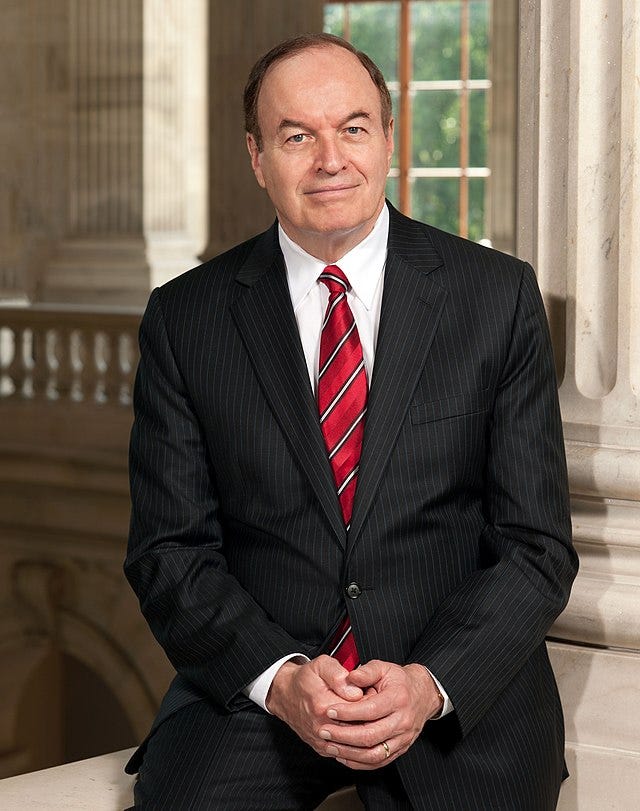Holding Sonia Sotomayor Hostage
Senator Richard Shelby's power play on Ed Carnes nomination
So after the Left launched its ugly, unfounded attack on Eleventh Circuit nominee Ed Carnes, how did Senator Richard Shelby of Alabama (then still a Democrat) strong-arm his fellow Democrats to win confirmation of Carnes’s nomination?
The curious answer is that Shelby threatened to block three other judicial nominations made by President George H.W. Bush.
Why would Shelby’s threat have any force with Democratic senators? Because Bush made those nominations at the behest of individual Democratic senators—and indeed, in the case of a 37-year-old district-court nominee by the name of Sonia Sotomayor, in the face of grave concerns held by White House lawyers.
* * *
Under the Senate Judiciary Committee’s longstanding “blue slip” practice, home-state senators have had a strong say over the judicial nominations that a president makes in their state (as well as over nominations for U.S. Attorney and U.S. marshal). Under that unwritten practice, the committee chairman invites home-state senators of both parties to express their approval or disapproval of each home-state judicial nominee on a sheet of paper (originally blue) that they return to the chairman. Different chairmen have varied (and have often been deliberately murky) on whether a negative blue slip would necessarily doom a nomination or just be given heavy weight. (Since late 2017, the blue slip for appellate nominees has been demoted to a much lesser role.)
Back during George H.W. Bush’s presidency, Democratic control of the Senate meant that committee chairman Joe Biden could confer on his fellow Democrats an effective veto over proposed judicial nominations in their states. That veto readily translated into an ability of Democratic senators to tell Bush whom he should nominate.
So it was that Senator Daniel Patrick Moynihan, as part of his power-sharing arrangement with his Republican colleague from New York, Al D’Amato, picked Sonia Sotomayor for a seat on the Southern District of New York. Moynihan’s aides would recount years later that he wanted Sotomayor to be the first Hispanic justice on the Supreme Court. Senator Bob Graham of Florida pushed the White House to nominate Susan Black to an Eleventh Circuit seat. Jimmy Carter had appointed Black to a federal district court seat in Florida in 1979. And Robert Byrd selected Irene Keeley for a district judgeship in West Virginia. Bush nominated Sotomayor in November 1991, Black in March 1992, and Keeley in April 1992.
* * *
On May 7, 1992, the Senate Judiciary Committee favorably reported the Carnes nomination to the Senate floor by a vote of 10 to 4. The eight Democrats on the committee divided evenly. As we have seen, even those who voted against Carnes found much in his record to praise.
The Left’s escalating and racially charged attack on Carnes put Senate Democratic leadership in a bind. Even though they controlled the Senate by the huge margin of 57 to 43, they knew that Carnes would almost surely win a floor vote on confirmation. Allowing Carnes to be confirmed would anger their liberal base, and in an election year no less. So the sensible strategy was to leave the Carnes nomination in limbo: majority leader George Mitchell would never bring it up for a vote, and the nomination would die a quiet death at the end of the session.
But Richard Shelby was livid at the Left for its reckless mischaracterizations of Carnes’s record, and he wasn’t going to allow Carnes’s nomination to be buried.
* * *
On June 4, 1992, the Judiciary Committee held a hearing on the nominations of Sotomayor, Black, and Keeley. When the committee promptly reported the nominations to the Senate floor, Shelby saw his opportunity.
The usual course would have been for George Mitchell to obtain unanimous consent from his fellow senators to bypass the cumbersome process of cloture and to confirm all of the nominations. But according to reports, Shelby put a “hold” on—that is, refused his consent to—Black’s nomination, and arranged for Republican senators to do the same on Sotomayor and Keeley. (There is no record of “holds,” so accounts of who put a hold on a matter are somewhat sketchy.)
Shelby’s demand was simple: give Carnes a cloture vote.
As one insider tells me, Byrd, Moynihan, and Graham were aghast that Shelby would block their picks. They and Mitchell
all met with Shelby insisting that the holds on the three Democrat-favored nominations be lifted, but he refused. He stood firm. Exasperated, Mitchell said: “Dick, when are you going to release those holds?” To which Shelby replied, “When hell freezes over or Carnes gets a vote, whichever comes first.”
Realizing that Shelby was not going to give in, the Democrat leadership gave in.
Mitchell could instead have moved for cloture on the three nominations. But that process would have taken a lot of floor time. It also risked embarrassing Byrd, Moynihan, and Graham, who might be perceived as lacking the clout to get their picks confirmed smoothly. It also would have deprived Sotomayor’s supporters down the road of the political talking point that Bush’s nomination of her was confirmed by unanimous consent. What’s more, Shelby would have just found another set of nominees to hold hostage.
* * *
On September 9, 1992, the Senate invoked cloture on the Carnes nomination by a vote of 66-30. The following day, it confirmed the nomination by a vote of 62 to 36. Twenty Democrats—over a third of the caucus—voted for Carnes.
Shelby had succeeded in using Democrats’ power over Bush’s judicial nominations to thwart their obstruction of the Carnes nomination.



